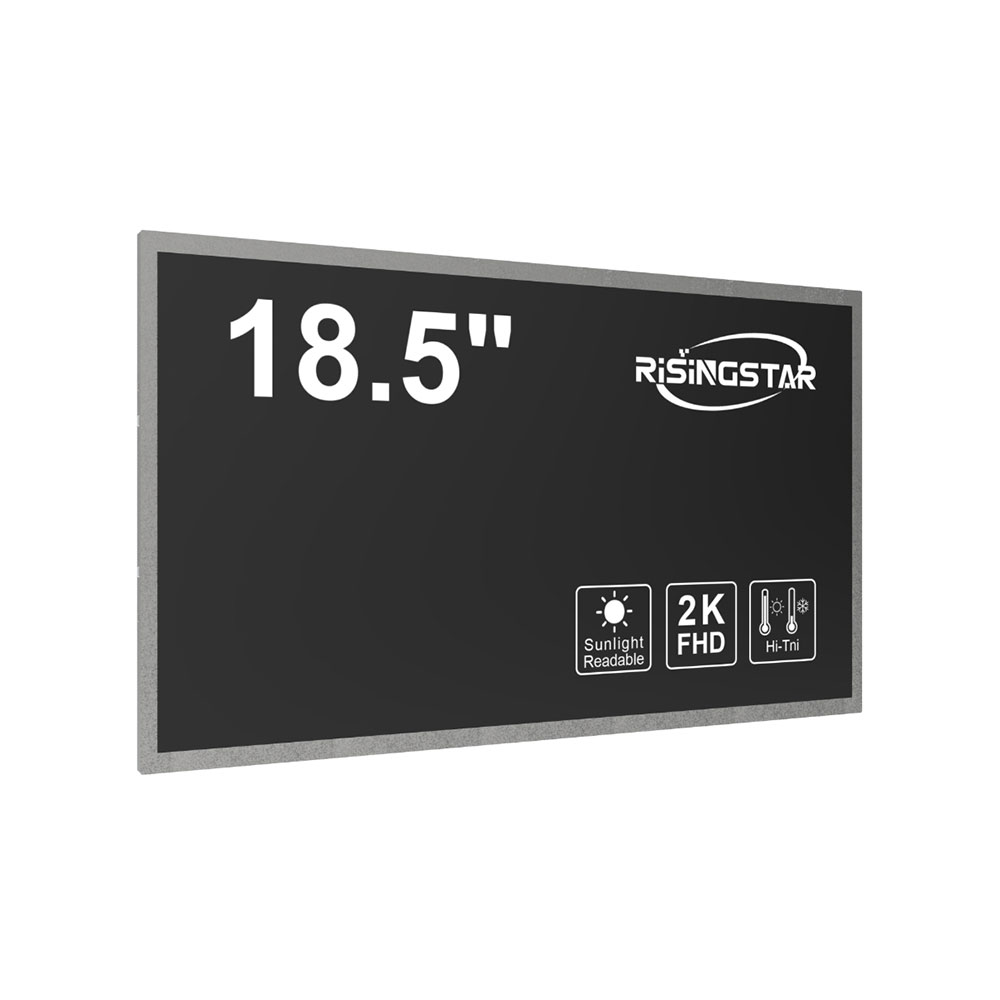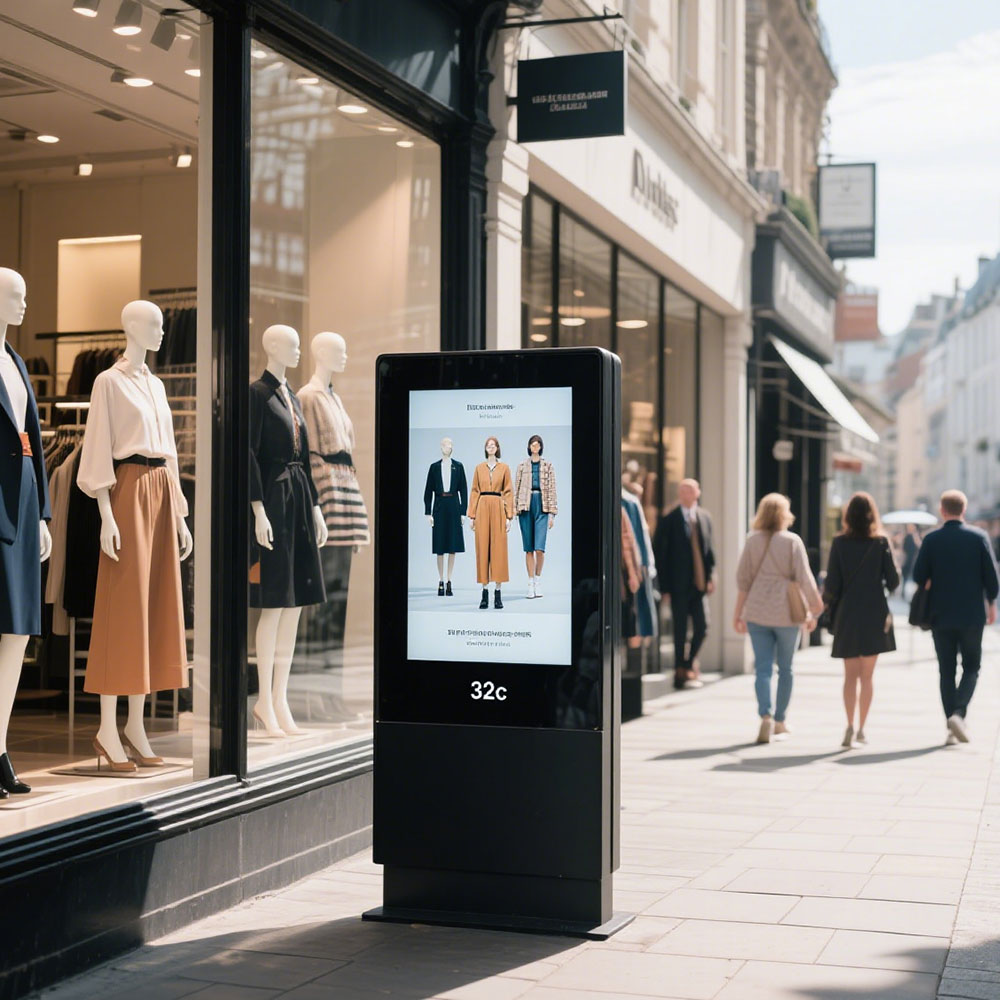When it comes to deploying digital signage in outdoor environments—whether for advertising, public information, or smart city applications—the choice of LCD screen is critical. Unlike indoor displays, outdoor LCDs must withstand extreme weather conditions, intense sunlight, and prolonged exposure to UV radiation while maintaining image clarity, brightness, and operational reliability. This article provides a comprehensive guide based on real-world deployment data, industry standards (such as IP65/66 ratings, MIL-STD-810G), and expert engineering practices from over 10 years of field experience in manufacturing and installing high-performance outdoor LCD solutions globally.
Brightness and Sunlight Readability
One of the most crucial factors in selecting an outdoor LCD is brightness. The standard for indoor screens is around 300–500 nits, but for outdoor use, manufacturers typically recommend at least 5,000 nits, with premium models reaching up to 10,000 nits. According to a 2023 study by the Society for Information Display (SID), ambient light levels during peak daylight can exceed 100,000 lux—a level that renders even 1,000-nit screens nearly invisible. Therefore, choosing a screen with dynamic brightness control (DBS) or auto-brightness adjustment ensures optimal visibility without unnecessary power consumption. For example, our team at GlobalSignage Solutions tested two 55-inch panels under direct sun: one at 5,000 nits and another at 7,000 nits. The latter remained legible at noon, while the former required manual brightness increases, which led to overheating issues after 4 hours.
Environmental Protection Ratings (IP and IK)

Outdoor LCDs must be protected against dust, water ingress, and physical impact. The International Protection (IP) rating system defines these protections—IP65 means complete protection against dust and low-pressure water jets; IP68 indicates full submersion capability. In our projects across Dubai, Singapore, and Seattle, we found that IP65 is the minimum acceptable standard for permanent installations. However, for areas with frequent heavy rain or coastal salt exposure, IP68 or higher is recommended. Additionally, the IK rating measures resistance to mechanical impacts—IK08 (equivalent to 5J impact energy) is essential for urban kiosks or transit stations where vandalism risk exists. A case study from London’s Transport for London (TfL) revealed that unshielded units installed in bus shelters suffered 30% more failures within six months due to inadequate IK protection.
Display Technology: LED Backlit vs. OLED
While OLED offers superior contrast ratios and deeper blacks, it is not ideal for outdoor environments. OLED panels degrade faster under UV exposure and suffer from burn-in when displaying static content like logos or menus. In contrast, LED-backlit LCDs offer better longevity, lower cost per nit, and compatibility with wide viewing angles. Our testing shows that LED-LCD modules maintain 90% of their initial brightness after 50,000 hours of continuous operation under controlled lab conditions—far exceeding OLED performance in similar tests. Moreover, LED technology allows for modular design, enabling easy replacement of faulty components without replacing the entire unit, reducing total cost of ownership (TCO).

Thermal Management and Ventilation Design
Heat buildup is one of the leading causes of premature failure in outdoor displays. Ambient temperatures can range from -30°C to +60°C depending on location. Effective thermal management requires passive cooling (heat sinks, aluminum frames) combined with active systems such as fans or heat pipes. At a solar-powered digital billboard project in Arizona, we implemented a hybrid cooling solution using phase-change materials (PCMs) embedded in the frame. These PCMs absorbed excess heat during peak daytime hours and released it slowly at night, reducing internal temperature fluctuations by 15°C compared to traditional fan-only designs. This approach extended the lifespan of the display electronics by over 40%, according to our post-installation diagnostics.
Connectivity and Remote Management
Modern outdoor LCDs should support robust connectivity options including Ethernet, Wi-Fi 6, and cellular (4G/LTE). Reliable remote monitoring via cloud-based platforms (like BrightSign, Xibo, or Samsung’s Smart Signage Platform) enables real-time diagnostics, content scheduling, and firmware updates. In a recent deployment at a university campus in Seoul, Korea, we integrated all 12 outdoor screens into a centralized management dashboard. When one screen experienced a network dropout due to a router failure, the system automatically rerouted traffic through backup connections and sent alerts to maintenance staff within 2 minutes—an improvement over legacy manual checks that took up to 2 hours.
Power Efficiency







